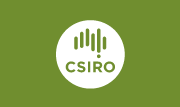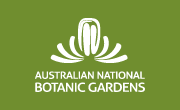Policy for accessioning of material
Specimens are accumulated by: direct collection of staff and associates, as donations or exchange from other institutions or individuals, as bequests, and as the subject of public and professional enquiries.
Specimens are to be registered as the first step in incorporation, with each specimen or specimen-component being given a unique alpha-numeric identification code, with this entered as soon as practicable in the institution’s electronic database(s). Database entries are to include details as to source, and full data pertaining to the collection. Where ancillary data exists that cannot be entered into the database (sketches, maps, photographic prints, etc), they will if necessary be copied by the accessioning officer to a suitable storage medium and either housed with the specimen or stored elsewhere with a cross-reference made on the specimen label. Digital photos or 35mm slides that accompany herbarium specimens will be lodged with the Australian Plant Image Index (APII) where they will be electronically linked to the herbarium specimen data..
Further steps in accessioning specimens are dealt with in ANH Collections Guidelines.
STAFF COLLECTIONS:
The Herbarium will liaise with other sections of CANBR, CSIRO, and ANBG to ensure consistent and high-quality collecting practice, and to develop agreed approaches, consistent with available resources, to vouchering of research project specimens. Herbarium staff will engage in periodic training of other staff in preferred herbarium procedures, and to familiarise themselves with the requirements of other sections.
Staff and students of CANBR and ANBG making specimen collections for lodgement in the Herbarium will comply with specimen and data requirements as set by the ANH. Specimens will be accompanied by unambiguous field notes including the latitude and longitude of the locality.
Submission of ex-cultivation vouchers by ANBG Living Collections staff shall be as per procedures laid down in separate policy.
INSTITUTIONAL EXCHANGE:
The ANH maintains an active program of specimen and data exchange with approved kindred institutions in Australia and overseas, with particular attention to obtaining specimens from areas of geographic or taxonomic priority. The Exchange program is conducted subject to legal requirements for the international exchange of botanical material, and observes the desirability of repatriation of data and (where feasible) duplicate specimens, especially of Type collections, to countries or states of origin. ANH shall also pay due attention to national and international protocols relating to ethnobotanical specimens or information in its custody.
DONATION:
Donations of material (other than normal inter-herbarium exchange) may be accepted from individuals or institutions. Such donations are encouraged, subject to the right of the ANH to assess suitability of the material, to deaccession or otherwise dispose of parts of it after donation, and to incorporate it into the general ANH collections. Such donations are to be made through the ANH Curator, who shall acknowledge them in writing.
Donated material shall be incorporated into the main collections. Donations that are made conditional on separate housing will not in general be accepted, unless of exceptional scientific and/or historical value, or unless their format renders normal incorporation impractical. ANH will meet any reasonable requests of donors to have donated material identified by annotation of the specimen records in the ANH database(s) and on the specimen labels, so as to allow permanent identification of material deriving from such donations.
Where taxation or other incentives for donation exist to the benefit of the donor, the ANH will assist in securing appropriate valuations, and shall provide supporting documentation to assist the donor’s claim, consistent with other provisions of this policy.
The ANH may accept collections of specimens or related material bequeathed to it or to CSIRO or to ANBG. Where conditions of the bequest conflict with provisions of this or other CANBR policy, the Curator shall refer the issue to the CANBR Executive Committee with recommendations.
Where associates of the CANBR or ANBG (e.g.: Scientific Associates, Honorary Research Fellows, Visiting Scientists) request temporary segregated housing of their own working collections for a period prior to or immediately after donation, such arrangements may be made, but should be for an agreed fixed period.
PRIORITIES FOR ACQUISITIONS:
Acquisition priorities are determined by the following criteria, combining institutional goals with ecogeographic and taxonomic factors:
a. – all plant taxa native to or naturalised in continental Australia and offshore islands or territories;
b. – voucher specimens for all accessions of live plant material acquired for the ANBG Living Collections section, for plant images accessioned to the ANBG Photographic Collection, and for research and information programs of the CANBR (or those of allied institutions on an as-agreed bases);
c. – a range of plant taxa from other areas, that are conspecific or congeneric (or, in cryptogams and in vascular groups under active research), or confamilial with taxa native to or naturalised in Australia or the external territories;
d. – plant taxa not yet in Australia but potentially significant weeds if introduced;
e. – other overseas plant taxa;
f. – collections of special historical significance.
[Criteria a & b are of co-equal importance, and require the most attention. For taxa fitting each of criteria a and b, we seek to acquire specimens exhibiting both the range of morphological variation and broad geographical range of the taxon.
[Criterion c is the next most important, and is essential in order to acquire material that places research or biological assessment of Australian taxa in a meaningful regional and world context.
[Criteria c & d provide for material to gauge variation in introduced taxa and provide prompt identification of new and potentially dangerous introductions.
[Criterion e allows for material for general comparative and reference purposes, especially for terrestrial cryptogams. For vascular plants it is accorded a relatively low priority. However for cryptogamic (non-tracheophyte) taxa a higher priority must be allocated to this criterion in order to facilitate basic identification tasks, due to the relatively low levels of taxonomic knowledge and of family and generic endemism in Australia.
[For each criterion, a general emphasis or preference will be given to acquiring vascular plants, bryophytes, lichens, and fungi with a relatively minor emphasis on algae.]
July 2007
![An Australian Government Initiative [logo]](/images/austgovt_canbr_90px.gif)




